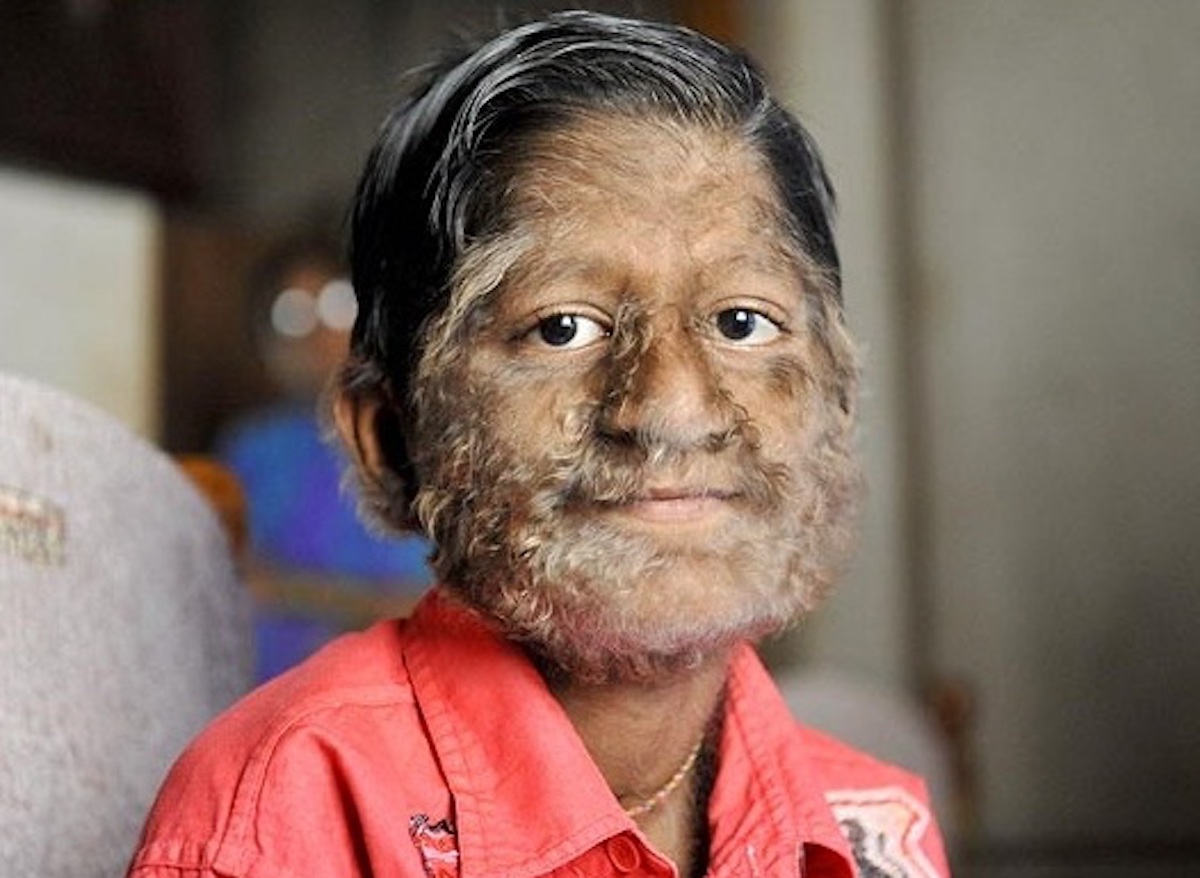Hypertrichosis, “Werewolf Syndrome”

Hirsutism is a condition that is associated with having excessive amounts of hair. However, the amount of hair in individuals with hirsutism does not compare to that of a person with Hypertrichosis. And the hair does not grow in only certain parts of the body like on the arms and hands but all over the body. Unfortunately, even a person with hypertrichosis’ face is usually covered in long hair.

This condition is usually a result of a genetic mutation; however, it can also be acquired later in life. Ironically, some individuals develop hypertrichosis after using anti-balding treatments; however, this is of course not always the case. Unfortunately there is no specific treatment for this disease and the individual must remove the hair in traditional ways, such as shaving or waxing. Electrolysis is the only known form of permanent hair removal; however, with the amount of hair that these individuals have, these treatments can be costly and time consuming as each single hair must be treated independently.
More from Things Health
-
Signs and Symptoms of Liver Damage
There are a variety of different causes of liver damage. For some, it is caused by genetics, making an individual prone to it, exposure to…
-
Visual Signs of Poor Health That Should Not Be Ignored
We often think that being diagnosed with an illness such as diabetes, heart disease, stroke or cancer as something that happens out of the blue.…
-
10 Common Symptoms of Having an Anxiety Disorder
What is normal? Sometimes it is difficult to determine when getting nervous or anxious is a normal feeling, and when you might have an anxiety…
-
The Most Common Causes of Atrial Fibrillation
Atrial fibrillation, Afib, is an abnormal heart rhythm, also known as an arrhythmia. Atrial fibrillation is described as rapid and irregular beating of the atrium,…
-
The Most Common Symptoms of Fibromyalgia
Fibromyalgia affects almost six million Americans. It is a pain disorder that influences the musculoskeletal system and alters the way that pain is processed by…






